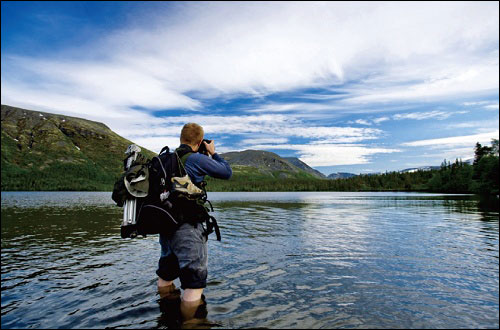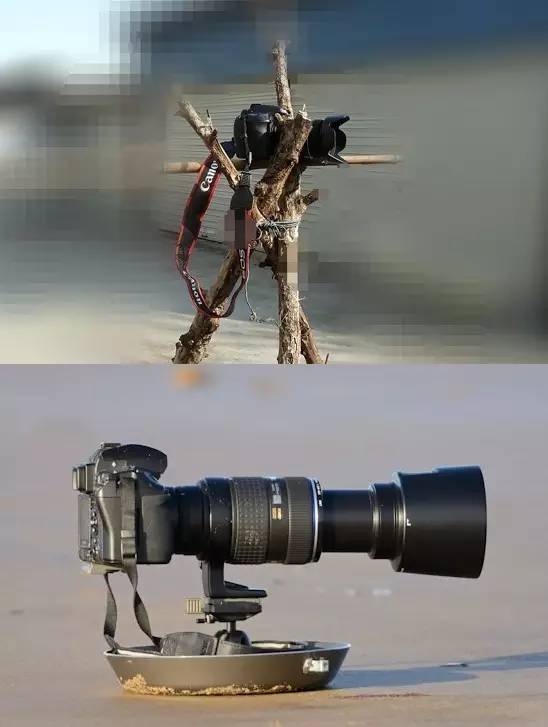Before people pick up the camera and shoot, people now frame the image in their minds. There are many methods and types of composition. In conventional shooting, the most basic requirement is to ensure that the picture is horizontal and vertical. In this way, the viewer can look very comfortable and conform to normal visual habits. Taking landscape photography as an example, there are several methods that can help us determine whether the picture is level or not.
Table of Contents
With the Help of Horizontal Scenery
This is the most commonly used method in shooting, which is to use the lines of the scene itself to help us determine the level of the picture. For example, when shooting large areas of lake water, boats on the lake may interfere with our confirmation of the level of the picture. At this time, you can check whether the picture is level when framing the scene by the connection line between the water surface and the horizon, or the boundary line with the scenery on the opposite bank. As long as this line is parallel to the upper and lower sides of the viewfinder, the composition will basically be horizontal. Similarly, this method can also be applied to photographing grassland or desert scenery. Other features that can assist with level confirmation are buildings, straight streets, stairs, or tall trees.
Camera screen Gridlines
When there is no outside scene to refer to, the camera in our hands can play a big role. Most of today’s home digital cameras have a grid line-assisted shooting function. As long as the grid lines are displayed on the screen, the picture level problem can be easily solved. In general, there are two ways to set gridlines on the screen. One is to use the screen display information key to switch the screen switch, shooting parameter display, grid lines and other functions. The other is to select in the menu, there will be an option to enable screen gridlines in the settings directory. In some digital SLR products in the live view state, the auxiliary reference line on the screen is in the shape of “+”, and this “+” reference line can also be used as a reference for confirming the level of the picture.
Electronic Spirit Level
For example, in digital SLR cameras, EOS 7D, EOS 550D, D3x, D3s, D700 and D300s, E30, EP-1, EP-2, etc., among household digital cameras, some products of R10, GRD series and CX series are designed with electronic level.
The electronic level on the camera can be displayed in two ways. One is the more intuitive graphical electronic level on mid-to-high-end digital SLR cameras. This type of electronic level is displayed in an intuitive “+” coordinate mode. In some early products, only the horizontal condition in the left and right directions can be displayed. The latest product has added a gyroscope inside, which can display the horizontal status in four directions, front, back, left, and right.
Another electronic level is relatively simple in terms of display status. Displays horizontal status by displaying horizontal or horizontal and vertical bars on the display screen. The different colors of the display bar can inform the user of the current level of the screen. Or use a sound to alert the user when the screen is level. Most of these electronic levels can only display the horizontal condition in the left and right directions. When the lens is perpendicular to the ground, the level will not work.
Tripod and Gimbal Level
It doesn’t matter if the camera doesn’t have an electronic level. Using this type of tripod and gimbal with a spirit level can also obtain a more accurate level picture. The level on the tripod is generally designed at the connection of the three-legged tubes. Due to the limited space, it is mostly designed in a circular shape. The inside of the level is filled with liquid and has a certain amount of air, forming a circular bubble. When the bubble is centered on the top circle mark, the tripod is level.
Due to the large space on the gimbal, the level is mostly long and is designed on the quick release plate locking frame. The principle is the same as that of the circular spirit level. When the bubble is in the center of the two scale lines, the quick release plate is in a horizontal position. Some better gimbals will design multiple levels to facilitate users to determine the all-round level.
Horizontal Bubble
This is an external level mounted on the hot shoe of the camera. This little thing is only $2~3, and it is very convenient to use. It is designed with horizontal posts in two directions, and can be installed on the hot shoe in two states. When placed horizontally, two tick marks are used as horizontal identification marks. When placed vertically, it is identified by the circle mark at the top. This leveling bubble will work if we are using a tripod without a spirit level device. When holding the camera, if you use the optical viewfinder, it will be a little inconvenient to use it, and it is convenient only with live view.
